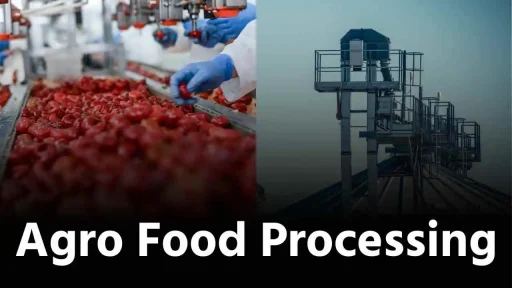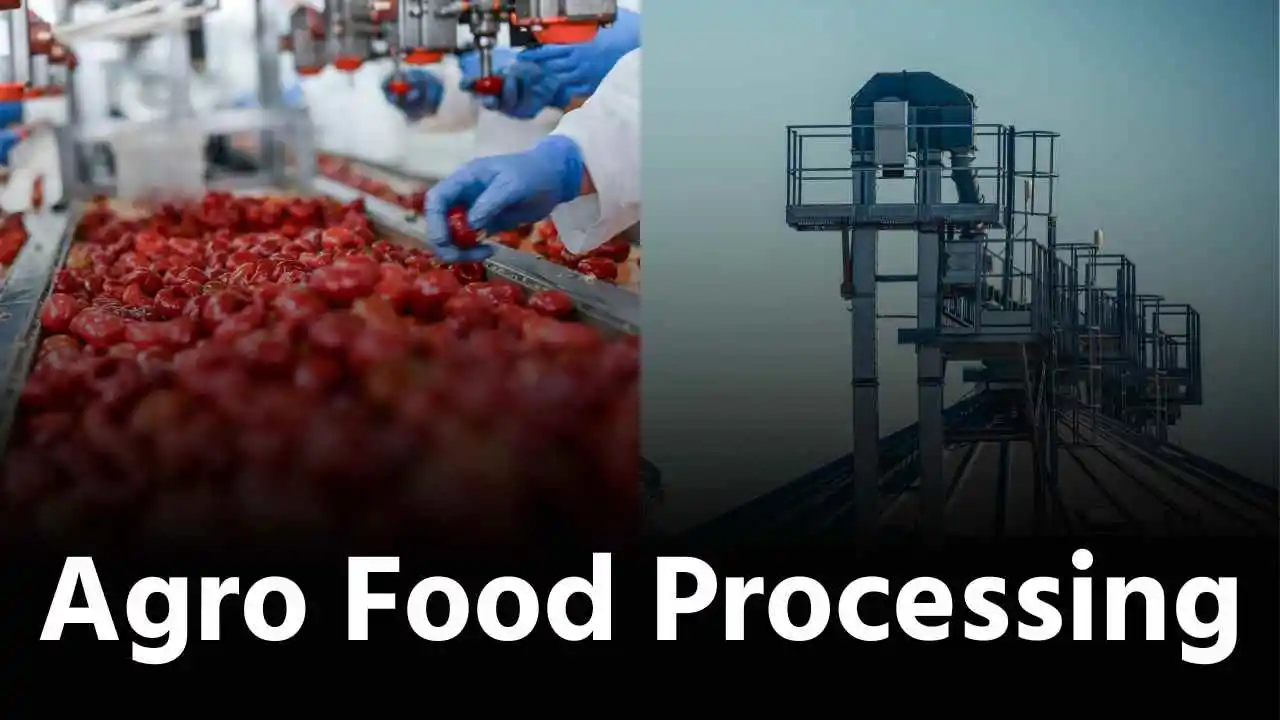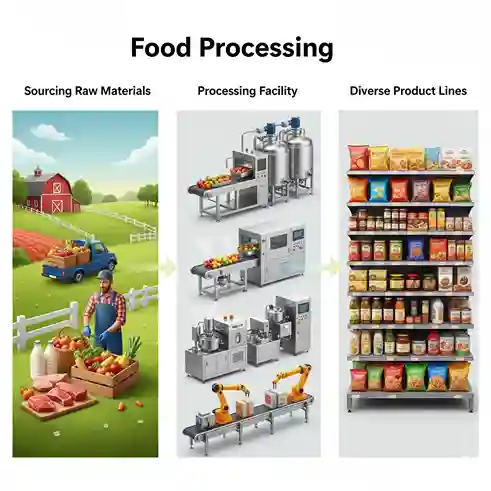Food processing makes it possible to get crisp potato chips in bags. Food processing allows you to drink mango juice during winter. Agro food processing transforms what farmers produce into drinks, snacks, and jams.
Many countries place a high value on agriculture. Farmers cultivate wheat, fruits and much more. But fresh food doesn’t last long. The food processing keeps the food fresh and safe for longer. This process transforms farm produce into food that we can enjoy at any time. This is how farm produce ends up in our kitchens.
This article will guide you through the world of food processing and explain what it is, why it is so important, and how it works.
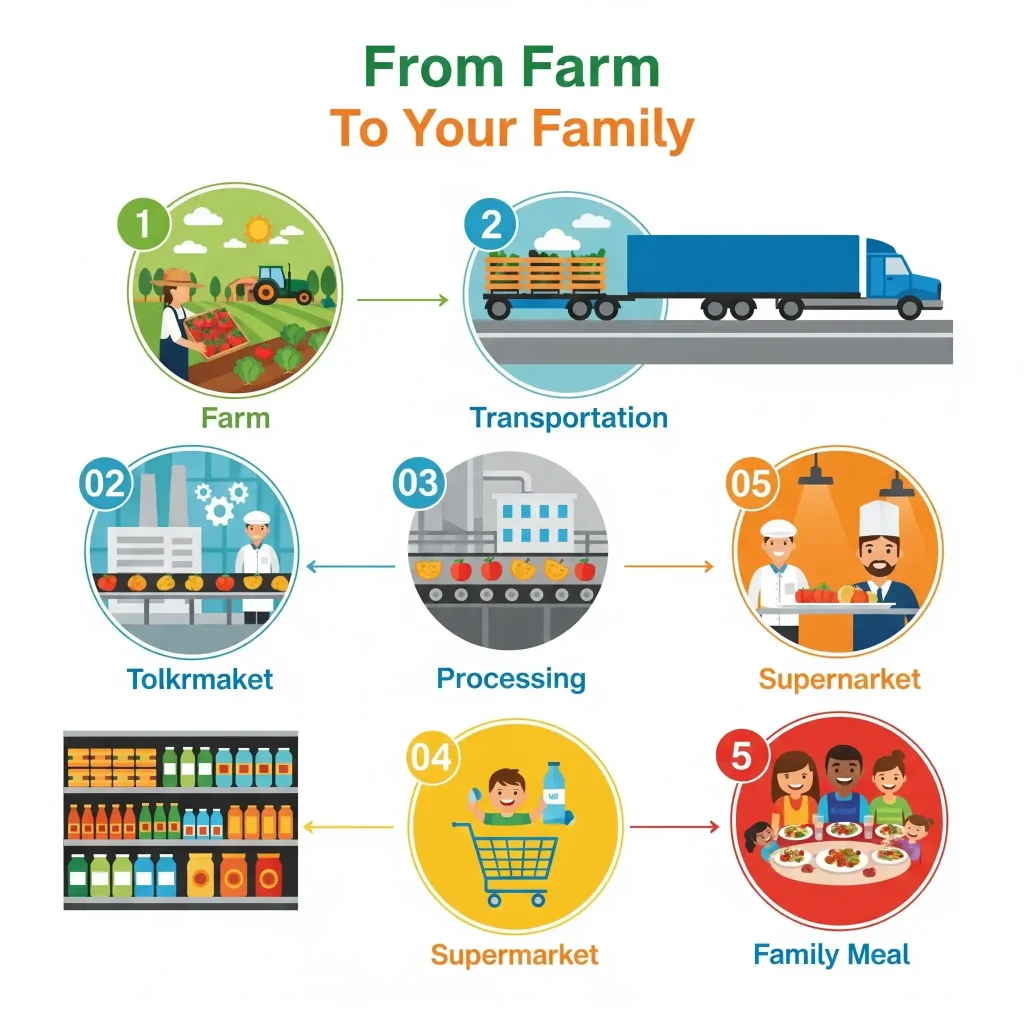
What is Agro Food Processing? How does Agro Food Processing Work?
From a raw agricultural item to the finished product on a shelf in a grocery store, there are several steps that must be carefully managed. We’ll break this process down.
Step 1: Gathering Raw Materials From the Farm
Farmers harvest crops on the farm. Farmers pick up rice, wheat or potatoes, as well as vegetables, fruits and milk. Ingredients are the key to good food. Farmers harvest fruits when they’re ripe. Grain is harvested when it’s dry. Then, everything is ready for the factory.
Related Article: Potato Chips and Snack Food Setup Manufacturing Business
Step 2: Safely Getting it to the Factory
The workers take the crops into the factory. They are moving fast, especially with things like milk, fruits, and vegetables. These foods spoil quickly. Cold trucks are used to keep the food fresh.
Workers store the food in the correct place when it reaches the factory. Grain goes in cool, dry areas. Fruits and vegetables are stored in large refrigerators. The food is kept there until the time comes to process it.
Step 3: The processing stage – This is where the magic happens
The main industry is food processing. It can be simple or complex. It is usually divided into three types.
Primary Processing
- They wash fruits and vegetables. They clean fruits and vegetables by washing off dirt, chemicals and other substances.
- Sorting and grading apples and eggs is done by their size and quality.
- Other mills process rice from paddy. Some mills use paddy to make rice.
- Shelling is the process of removing the outer shell from peanuts or peas.
- Food is safe and simple to handle after primary processing. The food looks exactly the same as it did before.
Read Our Book ‘Modern Technology of Agro Processing & Agricultural Waste Products‘
Secondary Processing
In this step, you will use the basic ingredients to create new food.
- Use flour to bake biscuits, bread, and cakes.
- Use fruit to make jam, juice or jellies.
- Use tomatoes to prepare sauce or ketchup.
- Pressing seeds is used to produce cooking oil.
- Pickles can be made from chillies, mangoes or other vegetables.
- The secondary processing process adds value. You can cook or eat the food right away.
Tertiary Process
The final step. This makes food that is ready to eat, or very convenient.
- It is easy to prepare instant noodles and pasta.
- Snacks like chips that are packaged and ready to eat.
- You can heat up frozen meals such as pizza or curry.
- Quickly grab ready-to-drink drinks and health beverages.
- Milk is all that’s needed for breakfast cereals.
Tertiary processing has become popular as people are looking for quick and easy meals.
Go Through Our Startup Selector Tool For Your Better Growth
Step 4: Packaging and Quality Control
After the food is processed, packaging becomes necessary. Packaging is not just a container. Packaging protects food against bacteria, moisture, and damage during transit. Labels also contain important information to consumers such as the ingredients, nutritional values, date of manufacturing, and expiry dates.
Before any product leaves the factory, it is subjected to quality control. In laboratories, samples are tested for harmful bacteria. They are also checked to see if they meet the standards of food safety authorities (like FDA USA or FSSAI India). This ensures that the food your family eats is safe.
Related Article: Food Colours, Flavours and Additives Technology Handbook (Second Edition)
Why is Agro-Food Processing Important?
It’s more than making tasty snacks. Food processing is an important part of a country’s economy and food safety. Here are some of the reasons food processing is important:
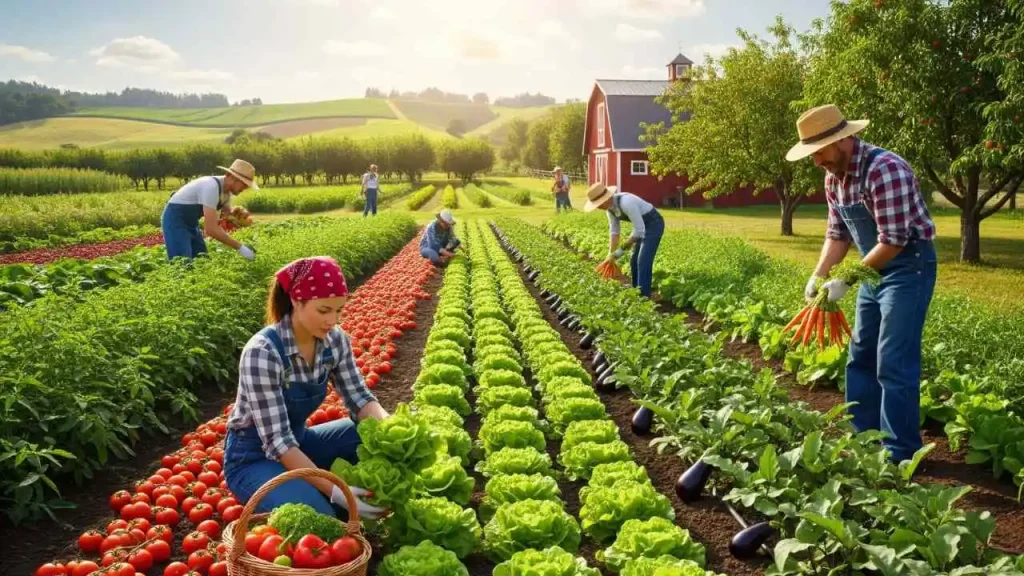
Reduce Food Waste: Farm products can spoil by up to 30-40% before they reach our tables. These foods are preserved through processing. To prevent waste, you can turn extra tomatoes and milk into powder or puree.
Foods Stay Available Always: The food industry makes sure that we can have green peas, mango juice and other seasonal foods at any time of the year. Food processing allows us to enjoy seasonal foods all year long, increasing our variety.
Job Creation: The Agro food Processing Industry generates millions of jobs. This industry requires workers for factories, technicians, salespeople, managers, and people to work in stores and warehouses. This industry has many opportunities for employment, both in rural and urban areas.
Stable Income: This is a reliable and stable market that can help farmers earn more. They can sell their products to companies that process them at agreed prices and avoid the worry of them rotting. The income is stable.
Processed food, when done properly, is more safe than raw produce bought from the market. This is because it has undergone a thorough cleaning and quality control process to remove microbes.
Read Our Project Report On Food Processing
Conclusion
Agro food processing has been a hidden hero in the food industry. All it takes is a seed to grow in the soil and then you have those delicious snacks or simple meals that you love. The people who work in this field prevent food waste, create jobs, and help grow the economy.
Families have a wide range of choices, and not just potatoes or bread. Food processing will become even more important as the world changes.
Agro Food Processing: Frequently Answered Questions (FAQs)
Q1: What is the difference between food processing and food production?
A. farmer produces food when they grow crops or raise livestock. Then comes food processing. Then, people turn these crops or animals into foods you can eat like yogurt or bread.
Q2: Do all processed foods contain harmful ingredients?
A. Nope. Not all processed foods are bad. Frozen vegetables, yogurt or canned beans are all super-healthy. Check the labels to avoid foods high in sugar or salt.
Q3: What are the steps to start a small business in food processing?
A. Make a plan first. Find a workspace and some equipment. The food safety office will issue you the necessary licenses. Some banks and governments offer loans to new food businesses.
Q4: What is the impact of food processing on nutritional value?
A. It depends. High heat can destroy Some vitamins. Some processes can make it easier for the body to absorb nutrients. Raw tomatoes have less lycopene that can be used by the body. Most of the good stuff is kept in by freezing.
Q5: What role does the government play in promoting the agro food processing industry?
A. Governments provide money and create spaces for food business. They provide training. They set rules to ensure food safety and quality. This encourages the growth of the industry and reduces waste.

